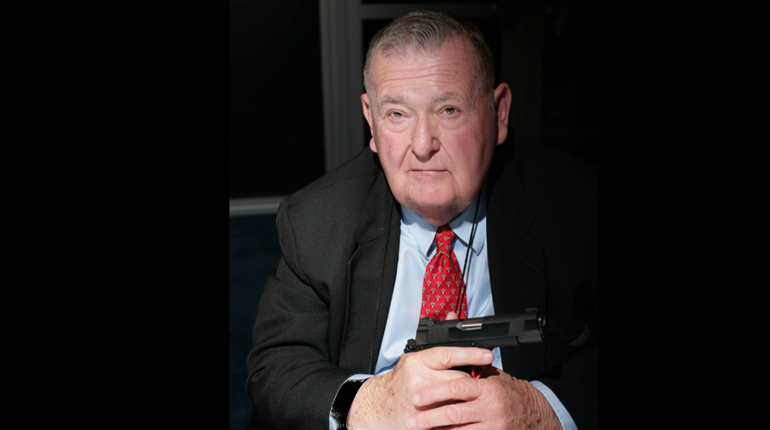
There are two basic types of automatic pistol mechanisms, known as actions. One is the blowback; while the other is known as recoil operated. Both accomplish the same thing: The breech is held closed until the bullet exits the muzzle before using the residual energy to extract and eject the spent case, load another cartridge and close the breech.
A blowback system is simpler, easier to manufacture and usually more compact. A recoil-operated system uses some form of mechanical lock—over-center toggle, rotating barrel, pivoting block or tilting barrel—to lock the barrel and slide together until the bullet exits the muzzle and pressure drops.
For many years, the blowback type used a rather heavy slide and strong spring to do this, while the recoil-operated guns used one of the mentioned locks. It was customary for pistols of .380 and smaller to be blowback, with guns chambered for 9 mm Luger and larger to be recoil-operated guns. The 9 mm was a de facto dividing line and there were no exceptions. In the interest of building a smaller and more easily concealable gun of greater power, several firms tried to make a blowback 9 mm. Walther tried twice, so did Astra and the most recent effort was the S&W SW9. All of these guns were plain failures. So, is it possible to make a blowback 9 mm?
Of course it is.
And it has been done quite successfully. Consider the innovative Heckler & Koch VP70. Among other distinctions, the gun had a polymer-covered steel receiver, brilliantly designed sights, rugged trigger mechanism and blowback operation. But the resulting gun was so big that it could not realistically fulfill any normal pistol role and fell into some gray area between service pistol and submachine gun. This is true of several other firearms that ended up being oddities and not widely distributed firearms.
The irony of this situation lies in the modern designer's discovery that you can make a very small .380 pistol—if you use a recoil-operated breech locking system.























![Winchester Comm[94]](/media/1mleusmd/winchester-comm-94.jpg?anchor=center&mode=crop&width=770&height=430&rnd=134090756537800000&quality=60)
![Winchester Comm[94]](/media/1mleusmd/winchester-comm-94.jpg?anchor=center&mode=crop&width=150&height=150&rnd=134090756537800000&quality=60)












